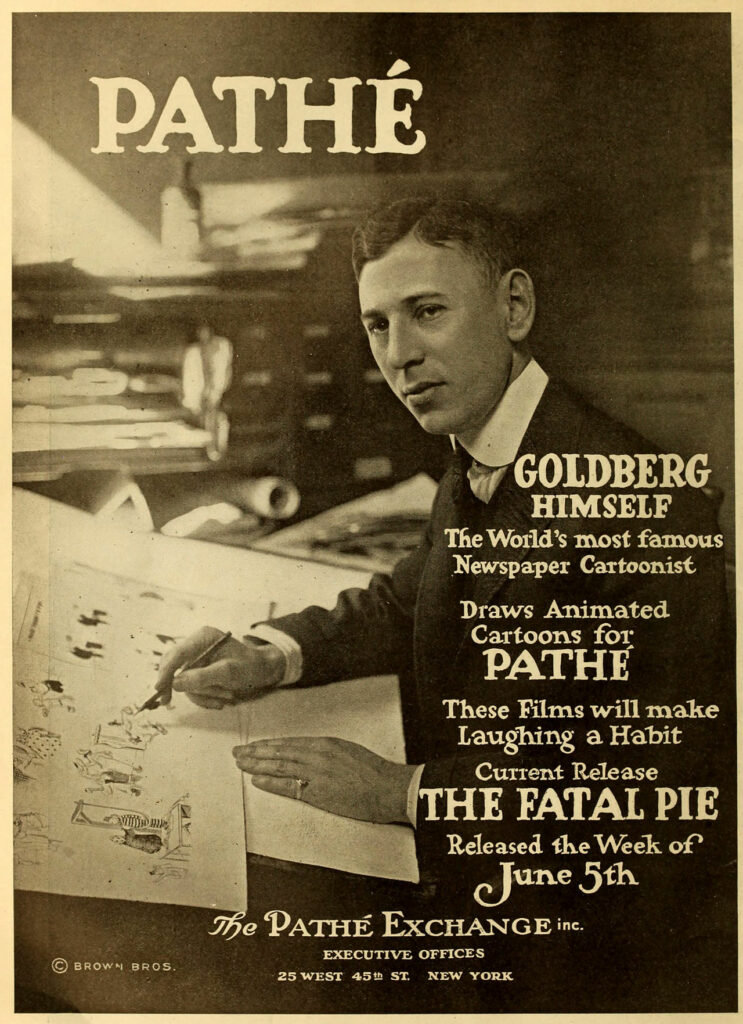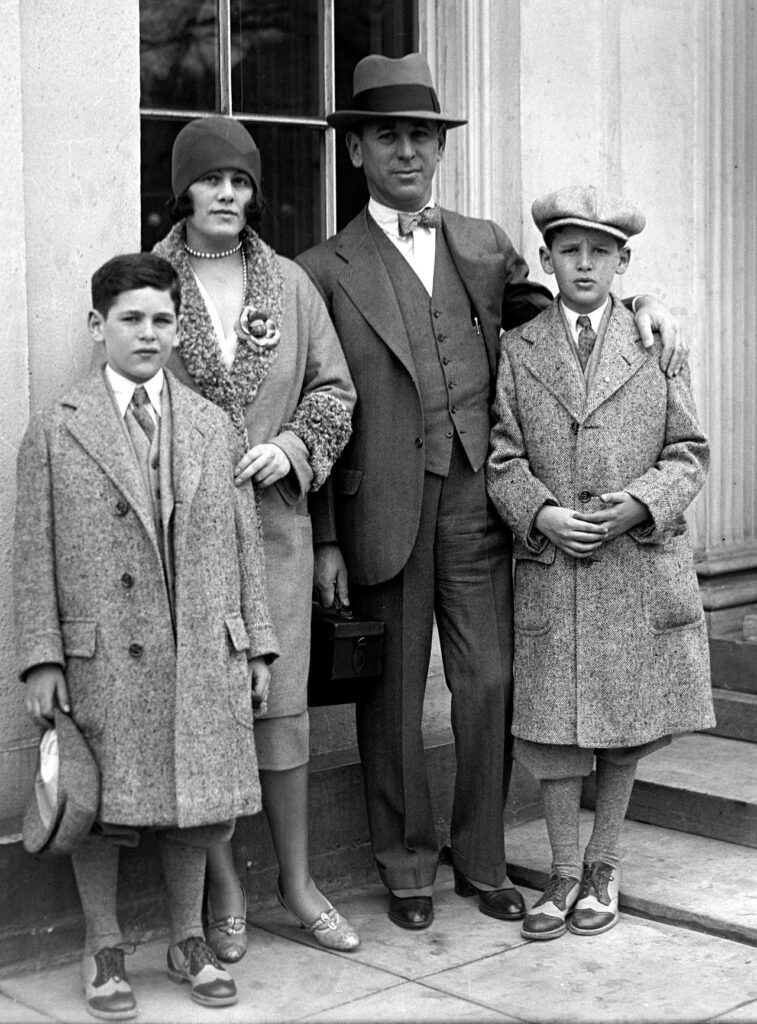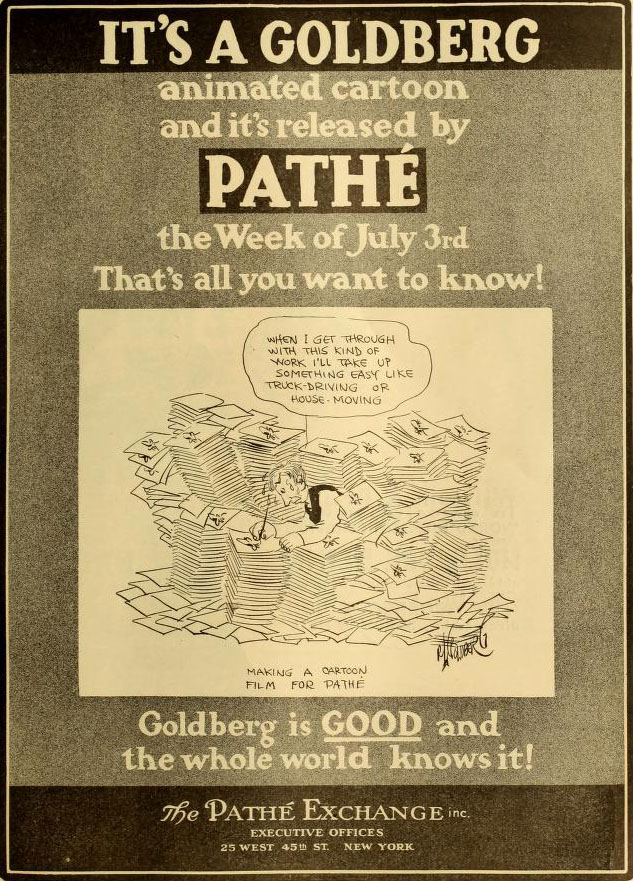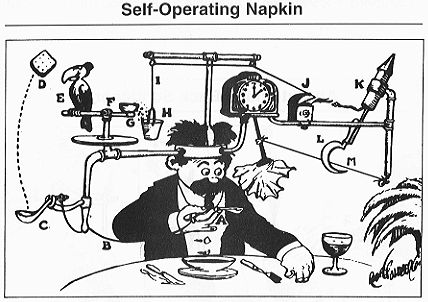Rube Goldberg was an American cartoonist, inventor, and engineer, whose name has become synonymous with complex machines that perform simple tasks in an overly complicated way. He used his cartoons to satirize the excesses of technology and the bureaucracy that often accompanied it.
In 1955, he entered the National Cartoonists Society Hall of Fame and was awarded the Presidential Medal of Freedom in 1968. His legacy lives on through his cartoons, inventions, and the annual Rube Goldberg Machine Contest. You can’t deny his impact on popular culture, engineering, and robotics.

The Early Life of Rube Goldberg
Rube Goldberg was born in San Francisco, California, on July 4, 1883. Goldberg was the second of eight children born to Max and Hannah Goldberg.
His father, Max, worked as a police officer in San Francisco and his mother, Hannah, was a homemaker. Growing up, Goldberg was interested in art and mechanics, and he often spent his free time sketching and building things.
He attended the California School of Mechanical Arts in San Francisco, where he studied art and engineering. Later, he studied painting and drawing at the Mark Hopkins Institute of Art.

After completing his education, Goldberg began working as a cartoonist for the San Francisco Chronicle. He quickly gained a reputation for his humorous cartoons.
His background and education played a vital role in his career, while his passion for art, mechanics, and engineering helped him to become a successful cartoonist, inventor, and engineer. His family background, specifically his father, also contributed to his understanding of society and how to comment on it through his cartoons.
What Were Rube Goldberg’s Most Influential works?
Goldberg’s most famous cartoons were his “inventions” series. These cartoons featured machines designed to perform simple tasks, such as turning off a light switch or making a cup of coffee convolutedly.
The machines often consisted of an elaborate series of gears, pulleys, levers, and other mechanical components that worked together to complete the task. These cartoons were popular with readers and helped to establish Goldberg as a household name.

In addition to his cartooning career, Rube Goldberg was also an inventor and engineer. He held several patents for his inventions, including a device that could automatically feed chickens and a machine that could turn on and off a light switch.
Despite his success as an inventor, Goldberg’s true passion was in cartooning, and he continued to draw cartoons throughout his life.
He created over 50,000 cartoons featured in newspapers and magazines across the country. His work was widely syndicated, and he was considered one of the most popular cartoonists of his time.
Other Known works
Goldberg’s cartoons were not only entertaining but also served as a commentary on the complexities of modern life.
He often used his inventions to satirize the excesses of technology and the bureaucracy that often accompanied it. As a result, his cartoons reflected the changing times, resonating with readers who were increasingly frustrated with the complex and often frustrating world around them.
Goldberg’s cartoons were not only limited to his “inventions” series. He also created several other series, such as “Mike and Ike,” “Boob McNutt,” and “Professor Lucifer Gorgonzola Butts,” which were also popular among readers.

Awards and Recognitions
Throughout his career, Goldberg received numerous awards and accolades for his work. He was accepted into the National Cartoonists Society Hall of Fame in 1955 and was awarded the Presidential Medal of Freedom in 1968.
Today, Goldberg’s name is synonymous with complex machines that perform simple tasks in an overly complicated way. His cartoons continue to be popular and are still widely recognized and appreciated.
The term “Rube Goldberg” has entered the lexicon as a descriptor for any overly complicated solution to a simple problem.
The Rube Goldberg Machine Contest is a competition where contestants replicate his style of creating machines that do simple tasks in complicated ways.
Rube Goldberg’s Legacy
Rube Goldberg’s influence can also be seen in popular culture. Countless machines and inventions inspired by his work have appeared in movies, TV shows, and books.
This style of overcomplicated machines has been used to comedic effect in films such as “Back to the Future” and “Home Alone.” His influence can also be seen in engineering and robotics, where complex machines and algorithms are designed to perform simple tasks efficiently.
Goldberg’s work inspires people to think creatively and challenge the status quo, though machines and inventions may have been fictional.
Still, they have sparked the imaginations of many, encouraging them to think about different ways to solve problems and approach the world differently.

